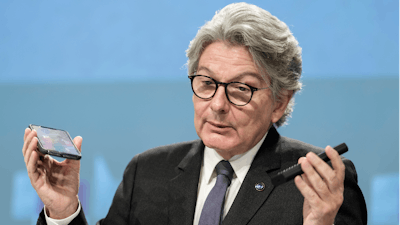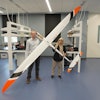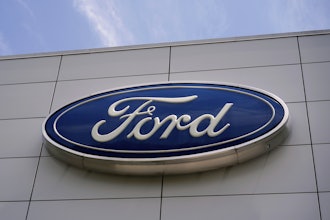
LONDON (AP) — Forget rummaging through the junk drawer. Soon, Europeans will only need to reach for one cable to charge their smartphones and other devices.
European Union officials said they inked a provisional agreement Tuesday that will require a uniform charging cord in the 27-nation bloc. It's part of a wider effort to make products sold in the EU more sustainable and cut down on electronic waste.
The new rules, which will take effect by fall 2024, mean EU consumers will only need to use a common USB Type-C cable for small and medium-sized rechargeable, portable electronic devices.
“European consumers were frustrated with multiple chargers piling up within their homes,” Alex Agius Saliba, the European Parliament's lead negotiator, said at a press briefing in Brussels. “Now, they will be able to go with a single charger for all portable electronics, which is an important step to increase consumer convenience.”
The devices covered include mobile phones, tablets, e-readers, earbuds, digital cameras, headphones and headsets, handheld videogame consoles, keyboards and mice, portable speakers and navigation devices.
Laptops also are covered, but manufacturers will have extra time to comply.
The rules apply only to devices sold in the European single market, which consists of 30 countries. However, like the EU’s strict privacy regulations, they could end up becoming a de facto standard for the rest of the world.
While many electronics makers have started adopting USB-C sockets into their devices, Apple has been one of the main holdouts.
Apple, which did not respond to a request for comment, has previously said it's concerned the rules would limit innovation and hurt consumers. The company's iPhones come with its own Lightning charging port, though newer models include cables that can be plugged into a USB-C socket.
The EU rules also outline standards for fast charging technology and give consumers the right to choose whether to buy new devices with or without a charger, which the EU estimates will save consumers 250 million euros ($266 million) a year.
Reducing electronic waste is another goal. The EU estimates disposed or unused chargers account for 11,000 metric tons of e-waste in Europe every year.
“One in every three chargers that is bundled with these products is never opened from its original packaging,” according to an impact assessment from the European Commission, the bloc’s executive arm, Saliba said.
To keep pace with the latest advances, there are also provisions to draw up standards further down the line for wireless charging, which is seen as the next leap forward for charging technology, Saliba said.
The EU spent more than a decade trying to cajole the electronics industry into adopting a common charging standard, an effort that whittled different charging plugs down to a handful until the commission forced the issue with draft legislation last September.
The European Parliament and European Council are expected to give formal approval to the agreement after the summer break.






















